Obi-Wan helped make three Star Wars games great - and you likely missed out
Opinion: A more civilized age
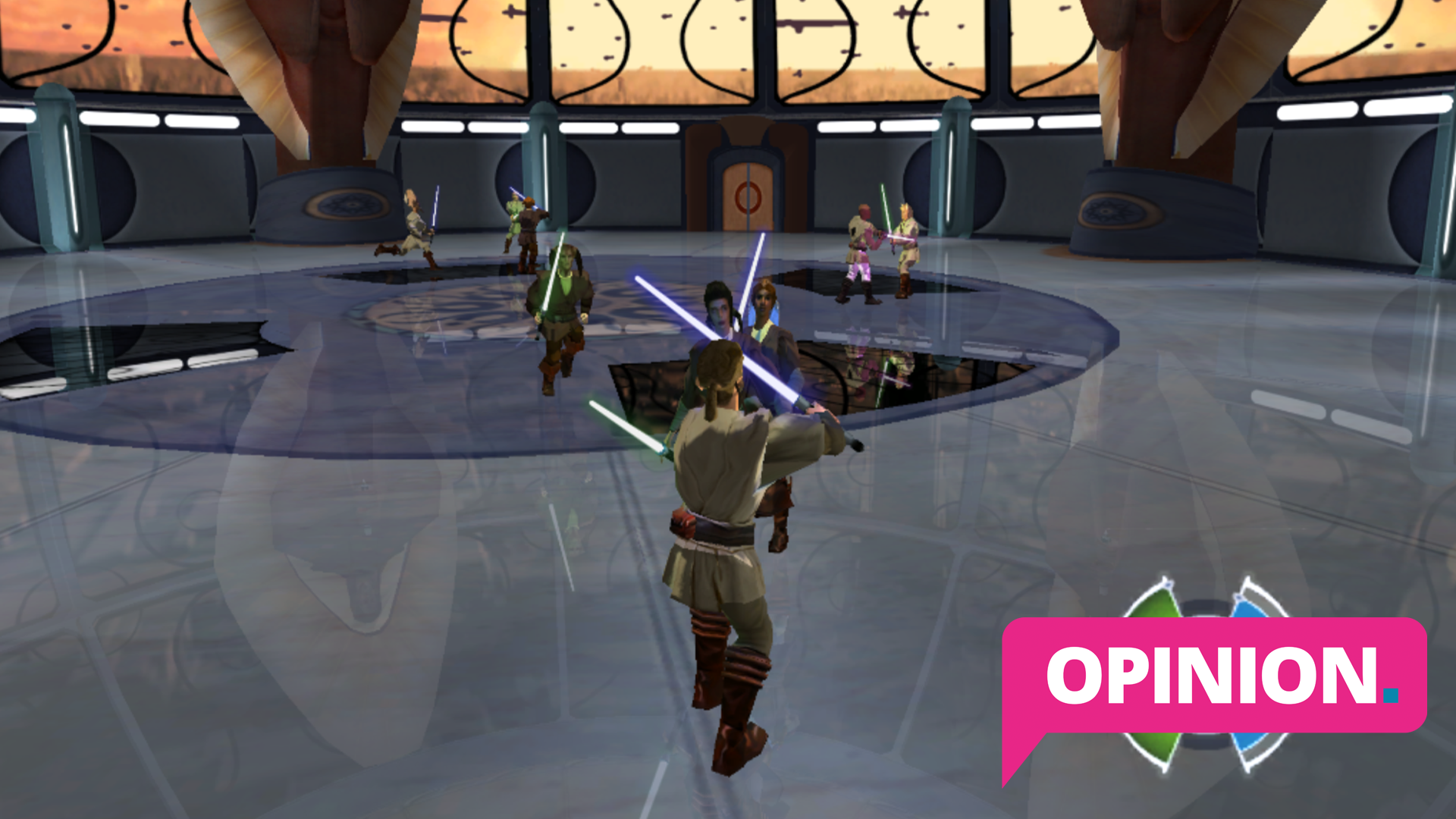
The Prequel Trilogy of Star Wars has had its fair share of criticism over the years, but the games that were based on these movies have been more fondly remembered by some.
I remember going to see Star Wars: Episode I at the cinema in 1999, while renting the games that were based on the movie. I enjoyed the film, and to this day I regard it as a fun one, even if there are glaring faults in its pacing and plot.
But there were three great games that I still highly regard today, released between 1999 and 2002 that were based on the film, and they mainly starred Obi-Wan. From third-person adventures to a Streets of Rage inspired take, they had their moments that all still hold up today.
With this in mind, here's why these games should return in remastered forms, especially as the Disney Plus series premiered on May 27.
Jedi Power Battles
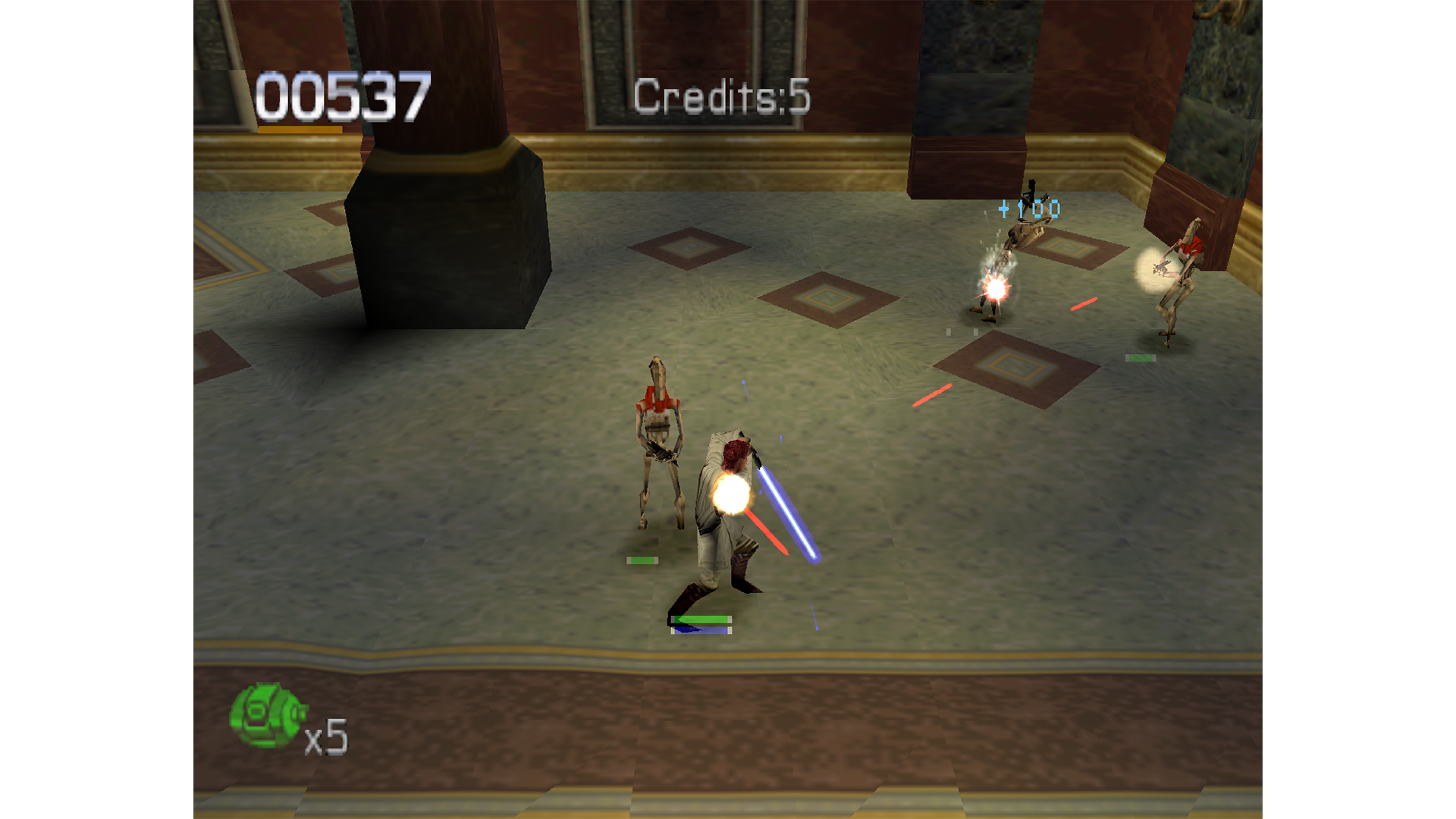
Boiled down to its minimum, you've got Streets of Rage mixed in with lightsabers and force powers for this entry.
Jedi Power Battles was given to me as a rental for one weekend. Previously to this, I'd seen an advert for it in a gaming magazine but figured it may be as terrible as another Star Wars fighting game I had recently played at the time - how wrong I was.
The first level is the assault on the Trade Federation, mirroring the start of Episode I, with all the music to boot to ramp up the fun. You can collect power-ups that can enhance your attacks, or make your lightsaber comically longer to reach other enemies further away.
Get daily insight, inspiration and deals in your inbox
Sign up for breaking news, reviews, opinion, top tech deals, and more.
But there were also a bunch of hidden levels and secrets that you had to find with a fine-toothcomb. From a level where you become a Destroyer Droid, to a 100-level task to attain a super-lightsaber with one-shot kills, it had a huge breadth of replayability.
While you could control other Jedi such as Mace Windu and Plo Koon, alongside a hidden Darth Maul option, Obi-Wan had the speed and right power-ups that meant you could easily go through the majority of the 10 levels with no issue. The controls were perfectly set for the controller, where timing would be key for some attacks. If you pressed L1 at the right time, a blaster shot would reflect back to the enemy, an endlessly satisfying moment, which still is to this day.
Playing this with another player extended the game, as you'd be working with a friend to make use of the enemies scattered across the screen, while deciding who's going to pick up the health powerup in the distance.
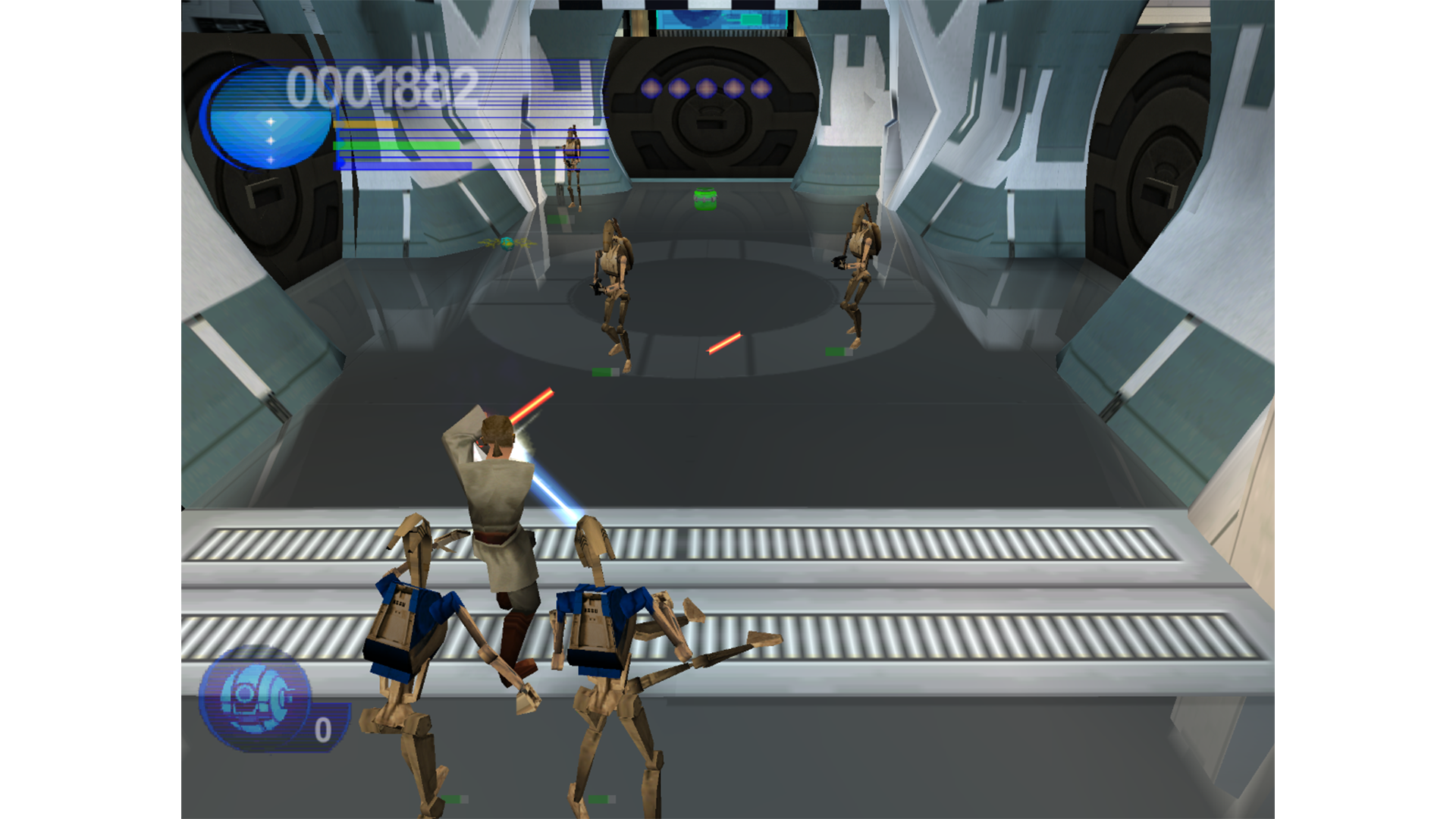
There are spikes in difficulty, especially when it comes to the mid-bosses in certain levels, such as the swamps and Tatooine, but the game wins out in how fun it is, and that's not looking at the Dreamcast port, which brought 60 frames per second and higher-quality graphics.
It's another entry that would be great as a port, especially on the Switch, but again, it could be something that Disney may want to move on from.
Star Wars: Obi-Wan
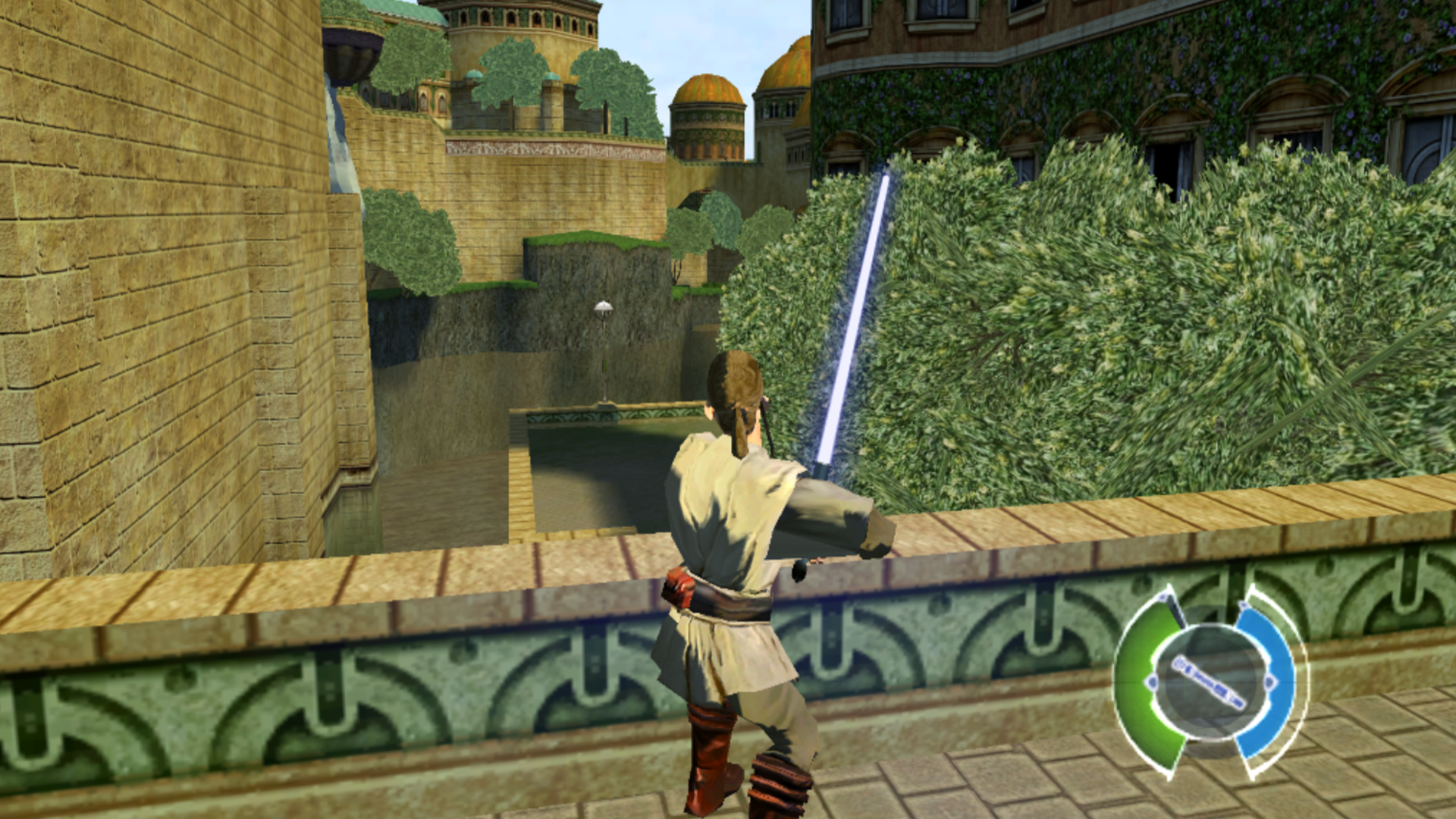
Released in December 2001 for America, and in March 2002 for the EU launch of the original Xbox console, Star Wars: Obi-Wan was originally thought to be a spin-off to the Dark Forces series that starred Kyle Katarn. But this was a whole new take with Obi-Wan to capitalize on the first prequel film.
The game is set before and during The Phantom Menace, with the player using the right stick to control the lightsaber, in a cel-shaded world that was almost reminiscent of SEGA's Jet Grind Radio.
Sprawled across ten levels and a bonus level where you face off against the Jedi Council in a battle-royale setting, you start at a time when Obi-Wan is still in training, while investigating for the Jedi Council, six months before the events of Episode 1 begin.
The controls were a big part of why I hold this game in high regard. It wasn't as stiff as Tomb Raider; thanks to its analog controls, you could perform gymnastics with the X button while deflecting blaster shots with the force. Using the right stick to swing your lightsaber was and is innovative, especially compared to the one-button attack that Fallen Order brought in 2020.
It's a game that's trapped on the Xbox, though, and it's not supported through the backward-compatibility program. But perhaps one day, Disney can look into a remastered release for an underrated game of Obi-Wan's travels.
Episode 1 tie-in
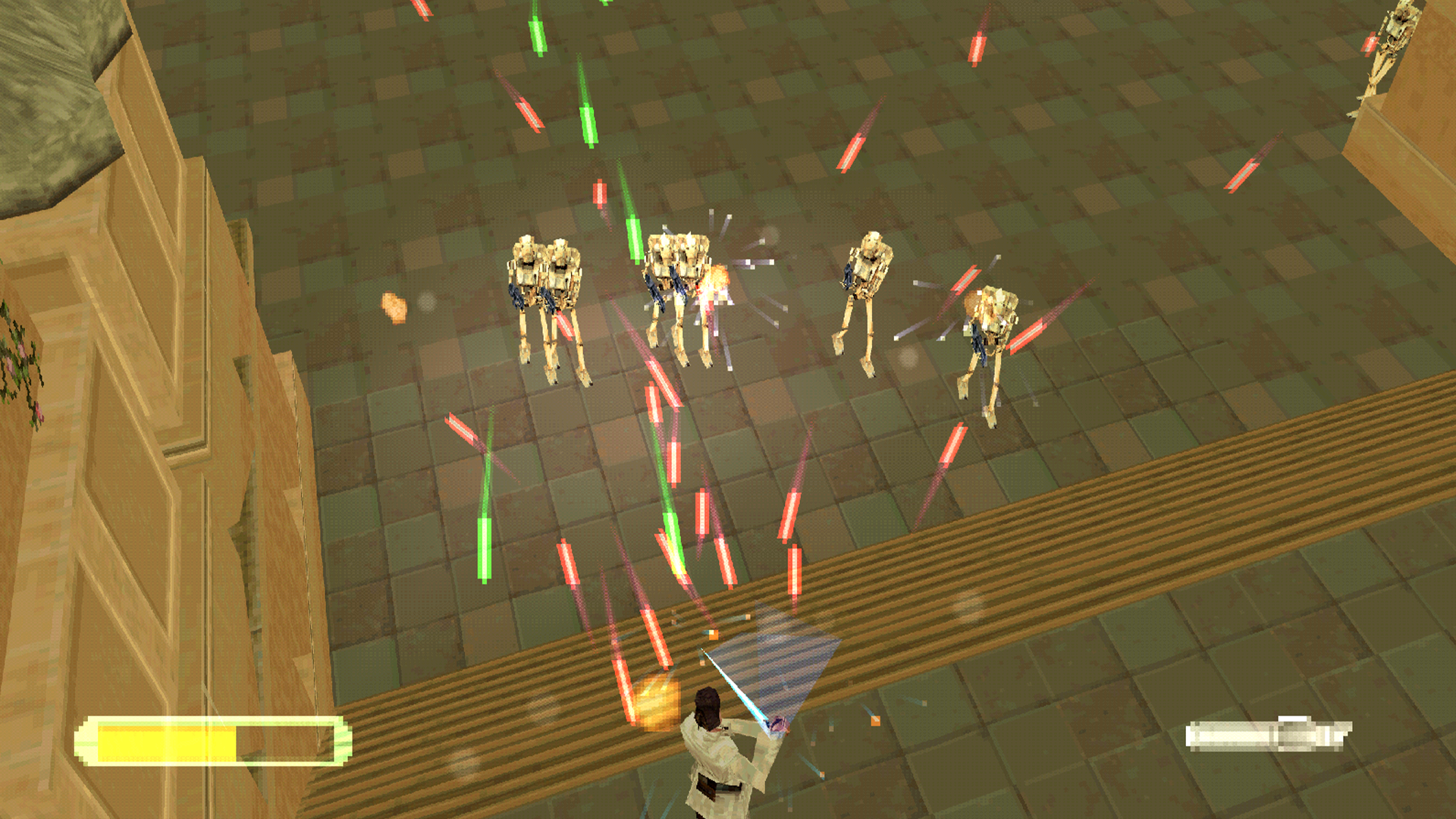
The best of them. The chosen one. The one that brings balance to me. I remember this game being previewed countless times in the middle of Episode 1's promotional tour, but it wasn't certain as to whether it would be exclusive to the PC.
Fortunately, finishing school on a Friday, I saw the game in my bedroom, ready to play on the PlayStation 1.
It was a mix of action and RPG elements, as you could interact with characters across the levels, and cut-scenes would help you follow along to the plot, almost to the line of Episode I's story.
Across eleven levels, you mostly play as Obi-Wan, with some areas where you control Qui-Gon, Padme Amidala, and her bodyguard, while the last level is all four characters. In some levels, you'll be trading machine parts, talking to as many characters as possible with multiple-choice answers, which could be in a polite or mean way, or you'll be rescuing random children to reunite with their mothers.
It's a top-down perspective, oddly reminiscent of both Crash Bandicoot and Tomb Raider, but there were plenty of weapons to choose from, alongside the voice-acting, a rarity for its time. Playing as Qui-Gon Jinn with a terrible accent is one point I remember being a highlight, while I'd walk around Moss Espa, trading equipment for a hyperdrive machine.
Granted, the controls could be stiff, and the difficulty could be brutal, especially when fighting against Darth Maul, but it avoided the curse of being a bad movie-to-game adaptation in how it weaved its way through Episode 1's plot. Instead of playing as Jar Jar, or leaning too heavily on the kid aspect of the film, it focused on what makes Star Wars fun, while being inspired by the games of its time.
Prior to this on the PlayStation, Star Wars games were either fighting games or ports of first-person entries from the PC. But with this and Jedi Power Battles, Star Wars on PS1 felt like it finally made sense, and unfortunately, it would be its highest moment until the tie-in game of Episode III arrived on the PlayStation 2 in 2005.
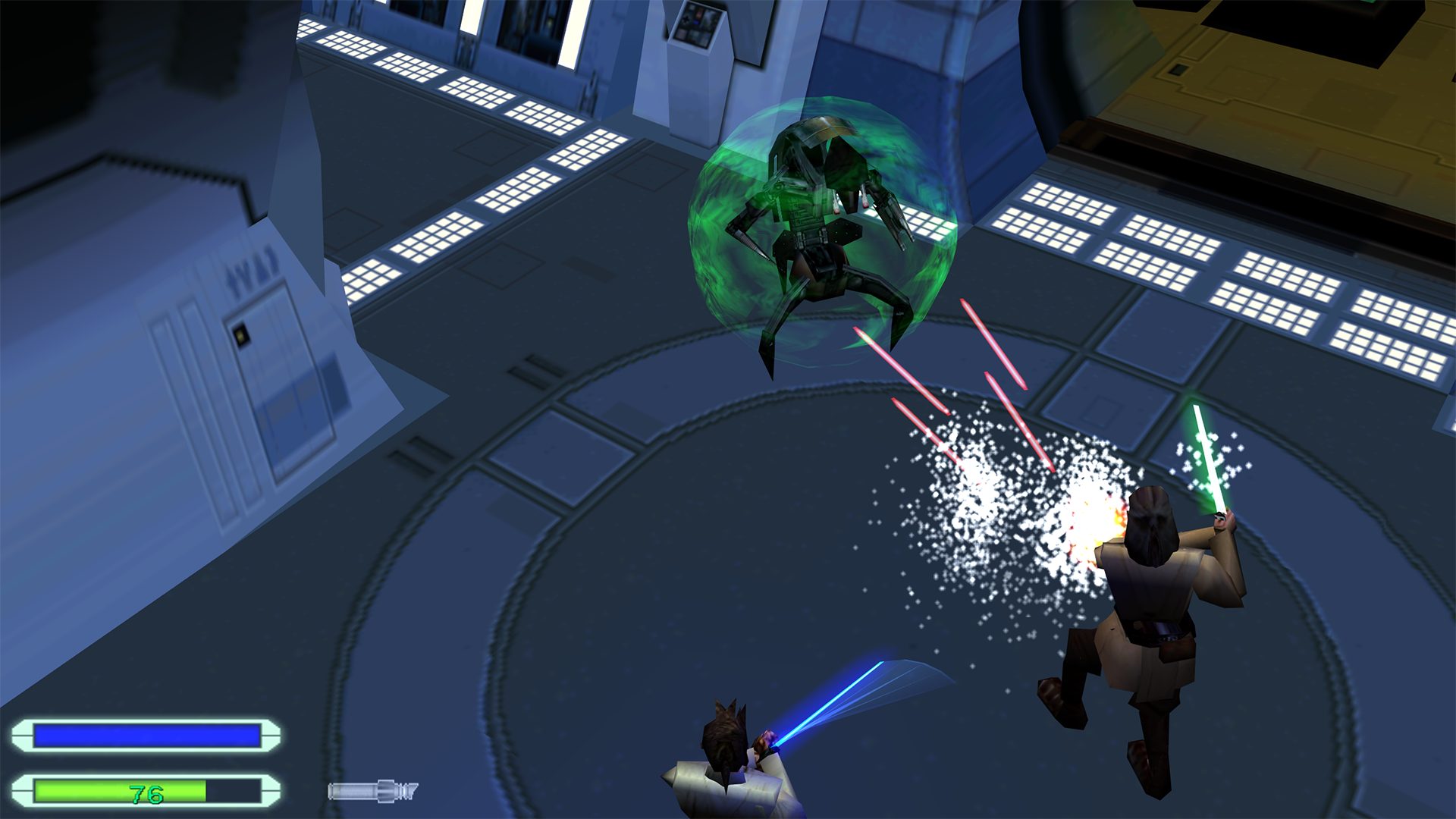
The PC version used to be impossible to run on modern PCs, but thankfully, other fans of the game have been able to get it working, and at modern resolutions at 1440P.
With the PlayStation 1 version, your best bet is to look on marketplaces for a hard copy, to use on your PlayStation 1, 2, or 3 consoles.
Could an Obi-Wan game happen again?
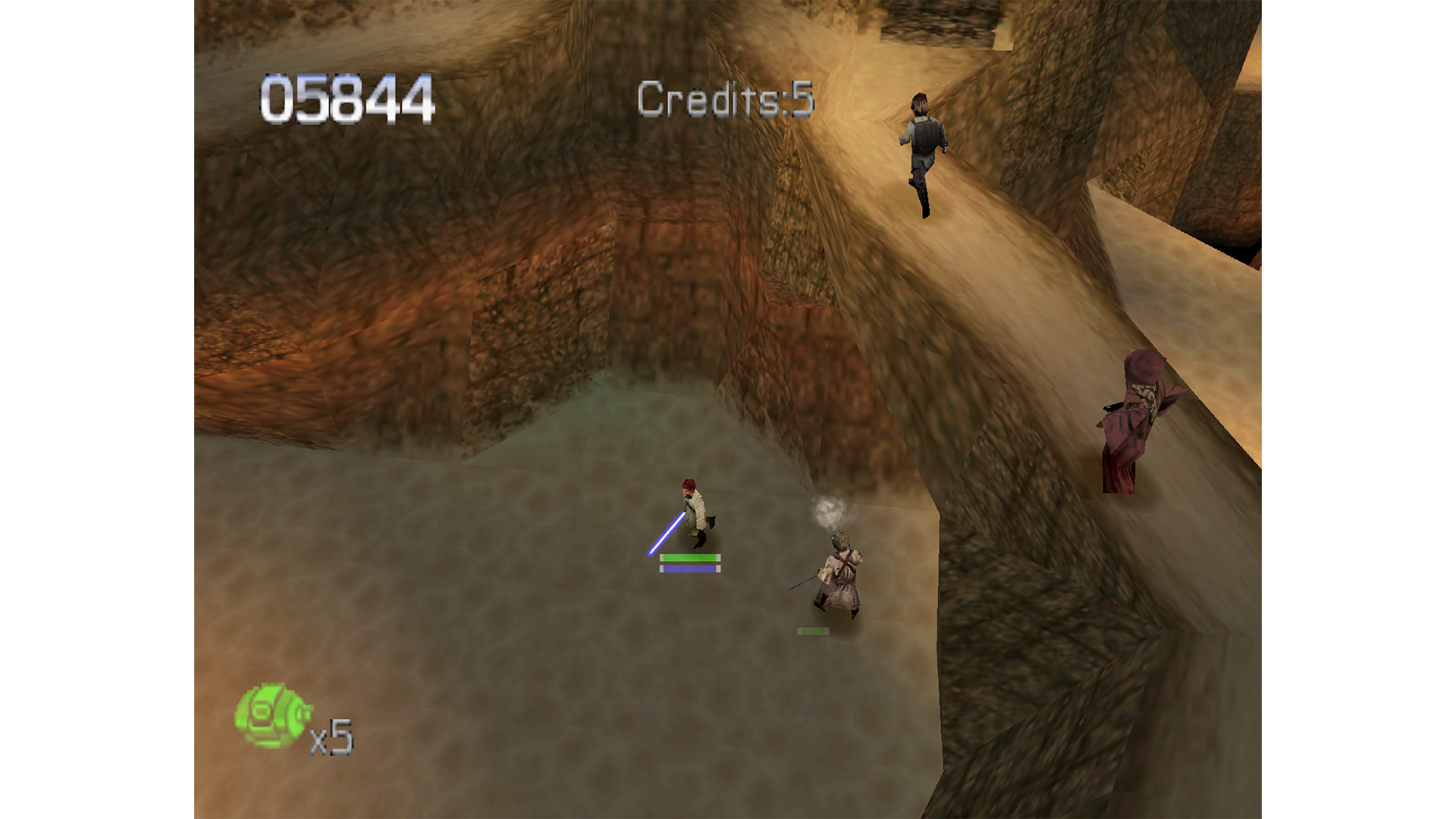
After years of rumors and speculation, Obi-Wan has finally returned to the forefront of Star Wars in his own, dedicated story. There couldn't be a better time for another game to focus on the character than now.
However, that's not to say that this should be a new game. The above all have great potential to be remastered as a collection for the Nintendo Switch for example. Being able to play these games in an easier way through modern consoles will be tempting to many, and if there's other improvements, such as trophies and online play, then even better.
But on the other side of this, a new game could also work well, even though this may be years from now. An open-world Obi-Wan game, similar to Metal Gear Solid V: The Phantom Pain, sprawled between his early padawan days, and his time before the TV series, could be appealing to many.
With Disney and LucasFilm Games opening up the Star Wars license to other developers than EA in recent years, there's always a chance that we may be seeing an Obi-Wan game, we just don't know it yet.
But regardless of this, if you can find an original Xbox or a Dreamcast, you'll be able to discover a time when Obi-Wan showcased how Star Wars games could be fun in completely different genres, other than the strategy and first-person games that seemed to flood the 90s.

Daryl had been freelancing for 3 years before joining TechRadar, now reporting on everything software-related. In his spare time, he's written a book, 'The Making of Tomb Raider'. His second book, '50 Years of Boss Fights', came out in 2024, with a third book coming in 2026. He also has a newsletter called 'Springboard'. He's usually found playing games old and new on his Steam Deck, Nintendo Switch, and MacBook Pro. If you have a story about an updated app, one that's about to launch, or just anything Software-related, drop him a line.